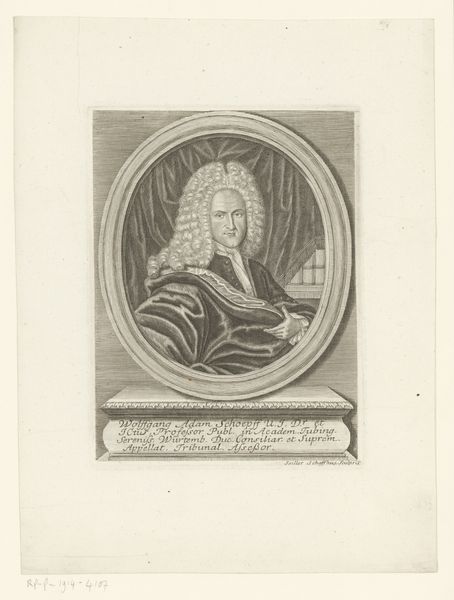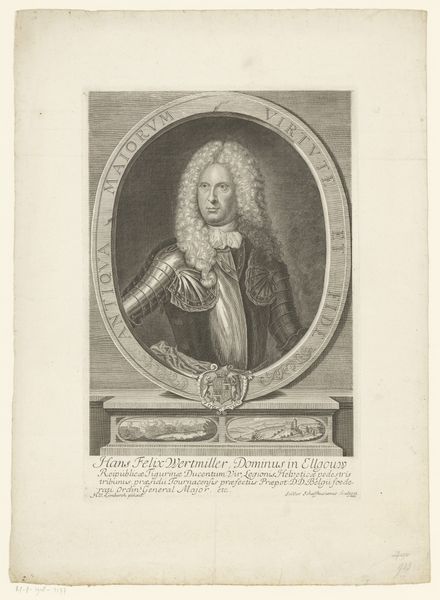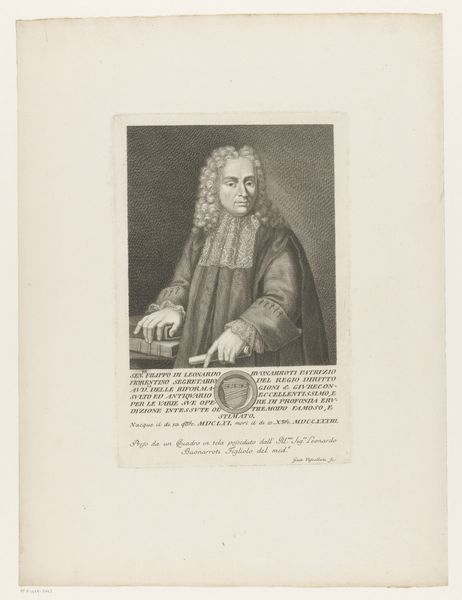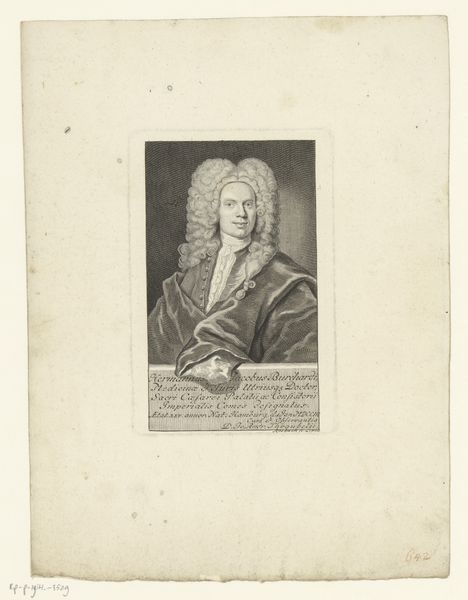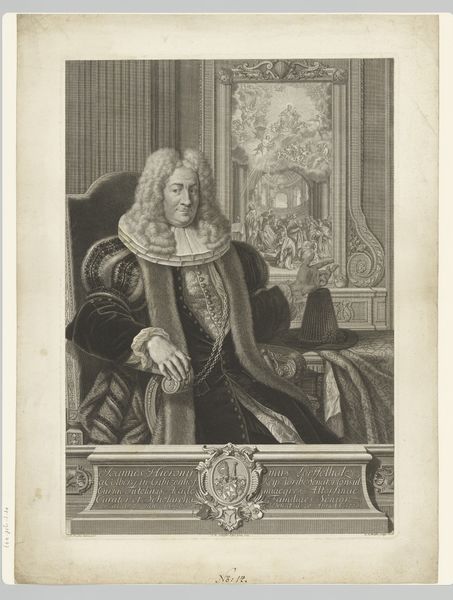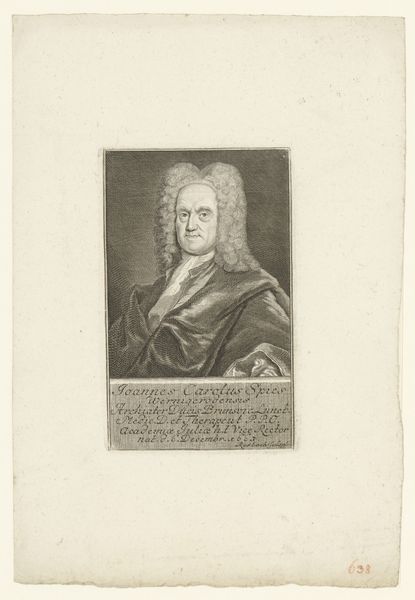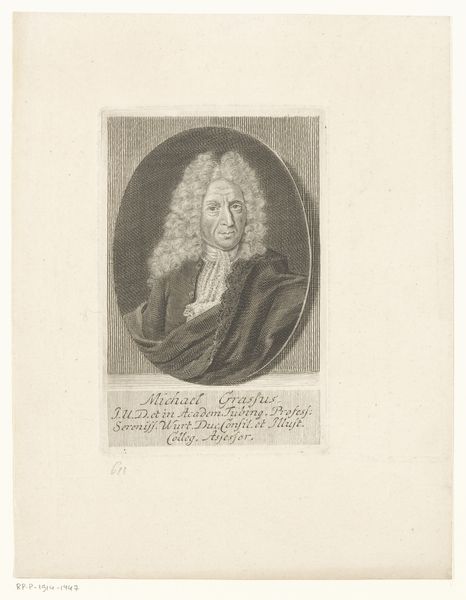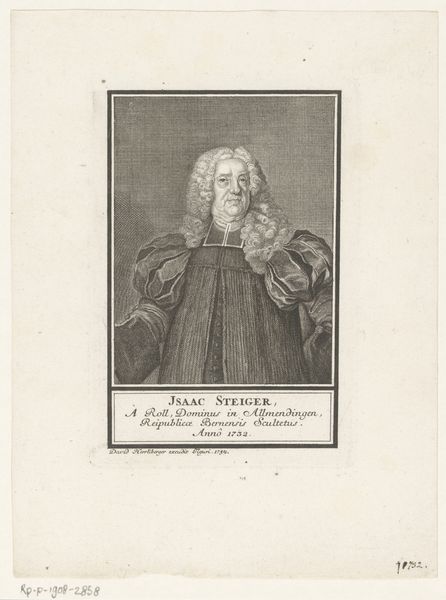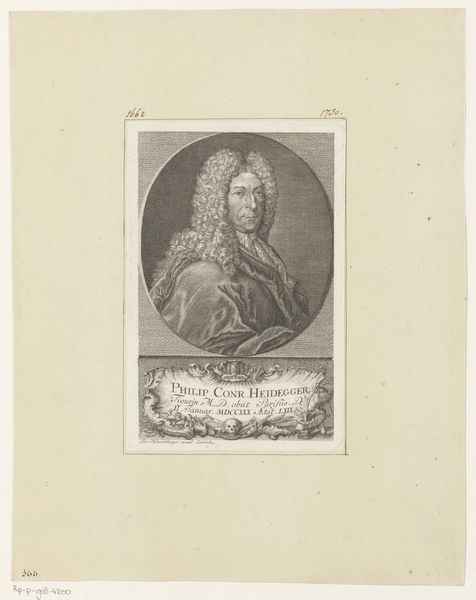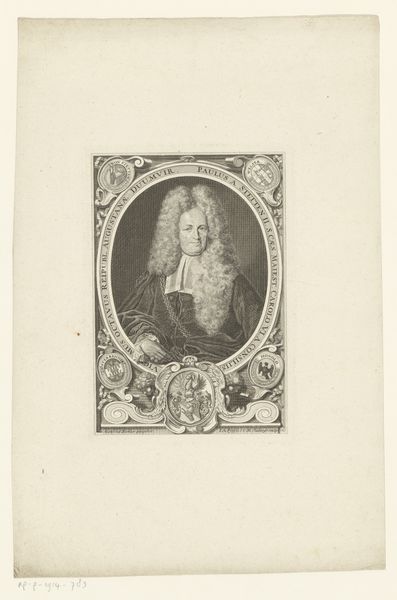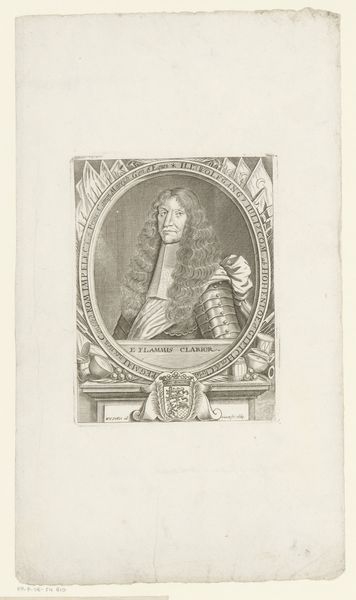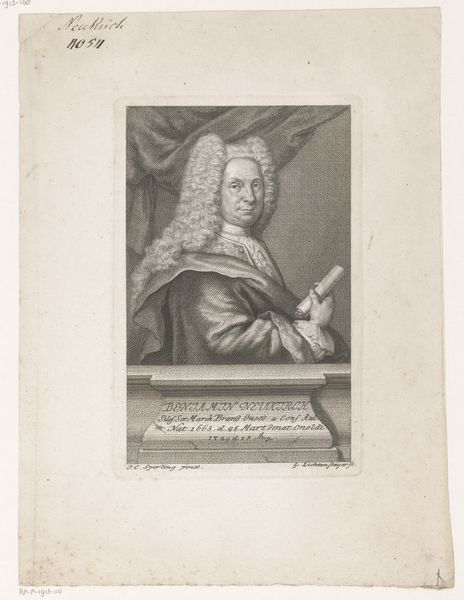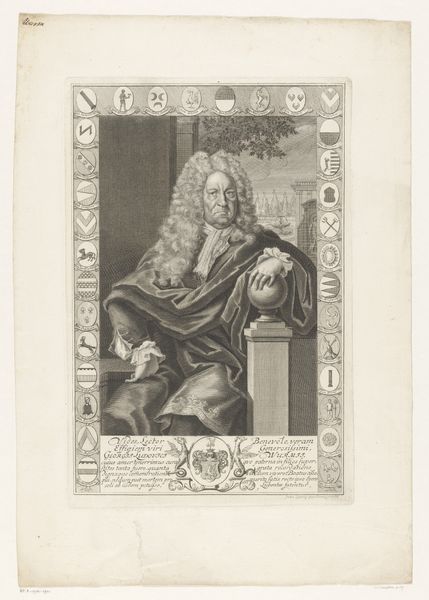
engraving
#
portrait
#
aged paper
#
baroque
#
old engraving style
#
pencil drawing
#
history-painting
#
engraving
Dimensions: height 359 mm, width 250 mm
Copyright: Rijks Museum: Open Domain
Curator: Jean-Baptiste Massé created this engraving, "Portret van Antoine Coypel," around 1717. It’s currently held in the Rijksmuseum collection. Editor: It immediately strikes me as a carefully constructed image, even in its muted tones. There’s a gravity, an almost staged theatricality, particularly in the way Coypel gazes out. Curator: It is quite deliberate, yes. Coypel was a leading painter during the reign of Louis XIV, so a portrait such as this one carried significant weight. Massé created this particular print based on a self portrait of Coypel. Think about how identity was crafted and circulated at the time through such depictions. Editor: I notice how Coypel’s wig seems almost like a halo, setting him apart, highlighting his importance in society. The architectural framing too, like a proscenium arch, makes him seem almost divinely appointed. What about the book, leaning conspicuously in the background? Curator: That's interesting. One could interpret it as a symbol of knowledge, power, and possibly access to restricted intellectual circles of the time. Given that Coypel was a history painter, did he look back for inspiration, to a classical world of emperors, gods and myths, thus, imbuing himself with the aura of wisdom? It would have also signaled the values that the aristocracy was aspiring to during this period. Editor: The line work is really quite impressive. The way Massé uses hatching and cross-hatching to create depth, shadow, and a variety of textures within the wig, the folds of his robes, even the pages of the book, suggests so much about the Baroque love of detail. It seems like he's revealing not just who Antoine Coypel *was*, but what he *meant* to embody. Curator: Absolutely. And the act of engraving itself would speak volumes at the time. Creating a lasting and reproducible image, like this one, served not only as memorializing him, but as reinforcing the societal structures that elevated individuals such as Coypel to positions of power. Editor: Seeing this now, I’m left wondering about the impact of this kind of portraiture on how we perceive authority figures today. Curator: It is certainly still present. Reflecting on pieces like these, we can better understand the deep-rooted structures that continue to shape our contemporary culture.
Comments
No comments
Be the first to comment and join the conversation on the ultimate creative platform.
